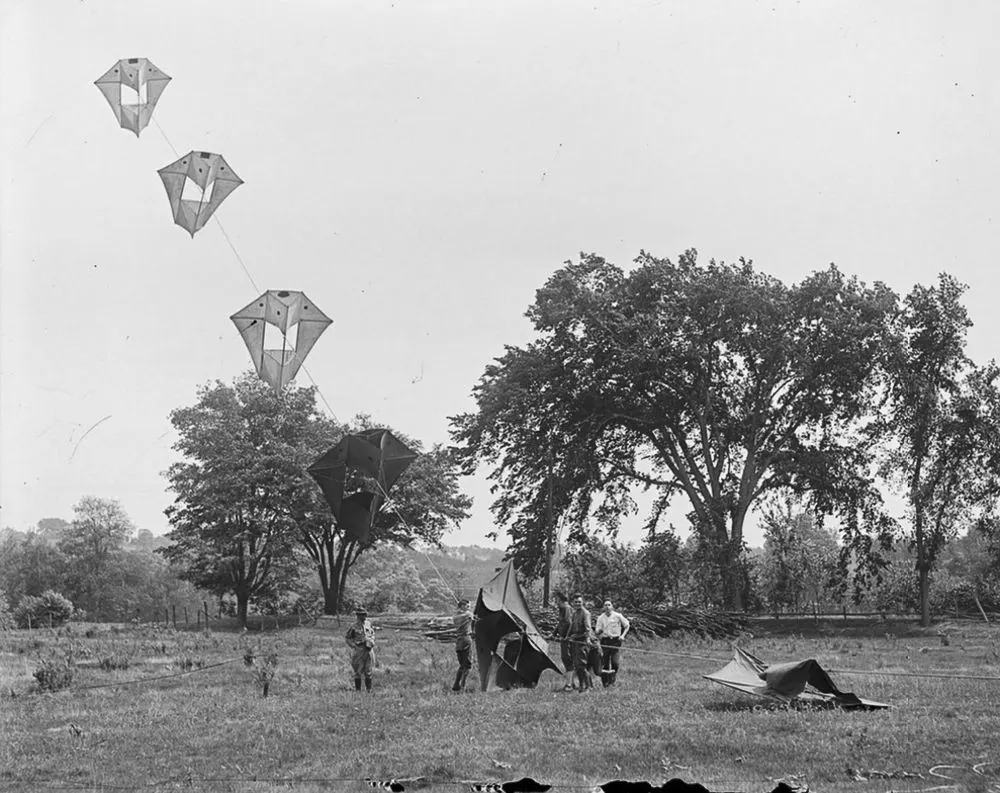Man-lifting kites were a type of kite that were designed to lift a person off the ground and into the air. They were developed in the late 19th and early 20th century as a means of aerial reconnaissance, or gathering information from the air.
The concept of man-lifting kites was first proposed by the British scientist George Pocock in the 1870s. He developed a kite that could lift a person into the air using a system of pulleys and ropes. The kite was controlled by the person on the ground, who would pull on the ropes to control the kite’s altitude and direction.
One of the most famous early uses of man-lifting kites was by the British army during the Second Boer War in South Africa. They used kites to lift observers high into the air to get a better view of the battlefield. The observers would then signal the position of enemy troops to the ground using a flag or light. The British also used kites for aerial photography, lifting cameras into the air to take pictures of the battlefield.
Man-lifting kites were also used for a variety of other purposes, such as meteorology, cartography, and search and rescue operations. Some inventors even attempted to use them as a means of human flight.
In the early 1900s, the US Weather Bureau used man-lifting kites to lift meteorological instruments into the air to measure temperature, humidity, and wind speed. Here are a few examples of the historical use of man-lifting kites
During World War I, the German army used man-lifting kites to lift observers into the air to spot enemy troop movements.
In the 1920s and 1930s, the Soviet Union experimented with using man-lifting kites for aerial reconnaissance and even attempted to use them as a means of human flight.
In the 1930s, the French explorer Jean Mermoz used man-lifting kites to lift himself and his crew into the air during his explorations of West Africa.
During World War II, the US Navy used man-lifting kites to lift radar antennas into the air to detect enemy ships and submarines.
In the 1950s, the US Air Force experimented with using man-lifting kites as a means of launching high-altitude research balloons.
In the 1960s and 1970s, the US Coast Guard used man-lifting kites to lift search and rescue equipment into the air during search and rescue operations.
However, despite their early promise, man-lifting kites were eventually replaced by other, more practical means of aerial reconnaissance such as balloons, airships, and airplanes. The development of airplane technology made it possible to fly higher, faster and more efficiently than the kites which led to their demise.



















